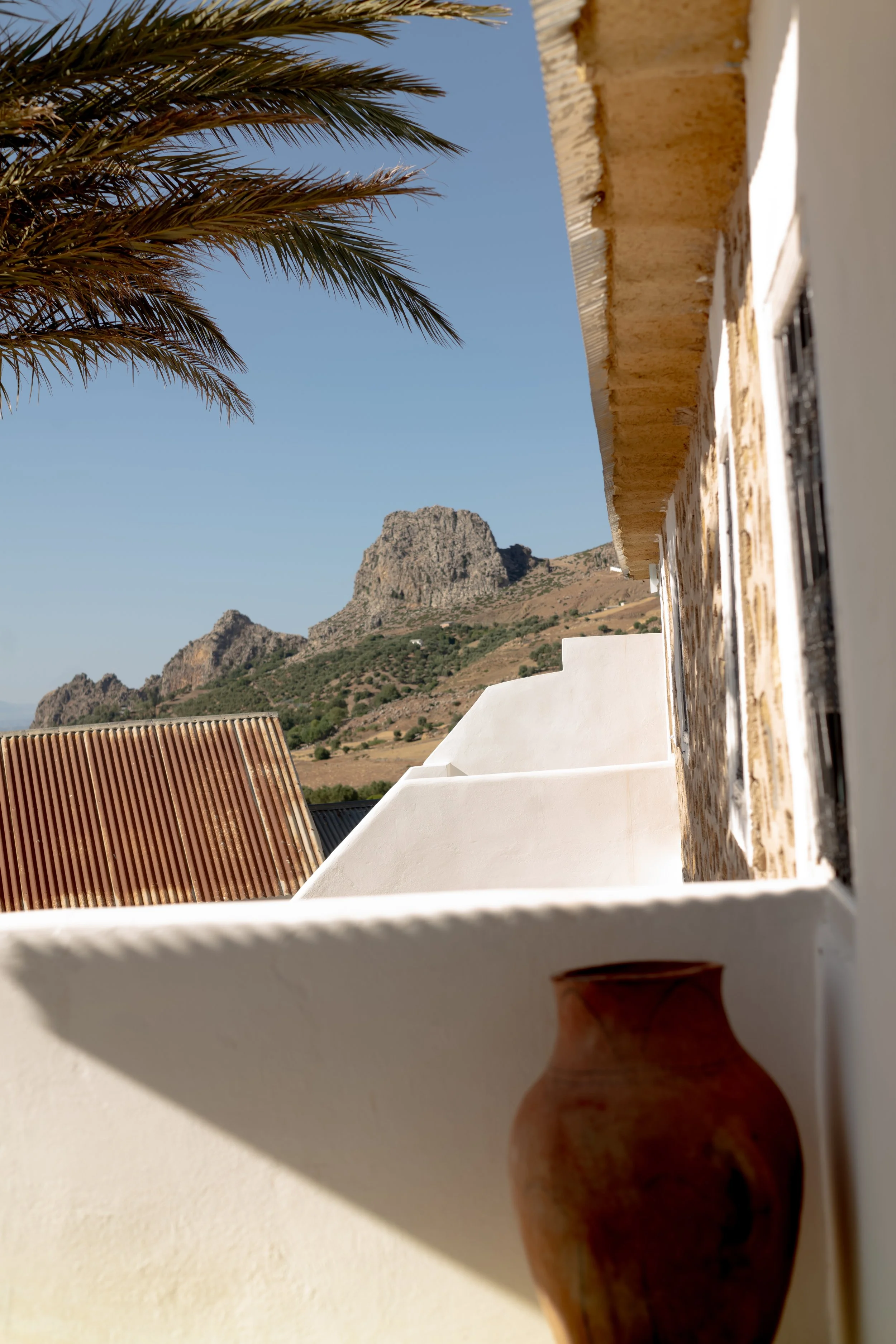Trip Recap: Ceramics + Weaving in the Rif Mountains of Morocco
This is a guest post, written by textile artist and trip guest, Jessie Mordine Young.
Photos by Kate Berry for Thread Caravan.
On the Ceramics and Weaving in the Rif Mountains Trip, guests spent a few days with master potter Mama Aïcha and her family to learn about the ceramic practices of the Sless tribe, who settled around mount Sidi Massoud.
In this region, pottery has long been a matriarchal practice. Traditionally, each household had one woman who shaped vessels and cookware for daily use. While some women sold their wares at the market for supplemental income, pottery was largely considered part of homemaking - a practice rooted in care and continuity.
As plastic packaging and imported goods became more common, the demand for handmade ceramics waned. Many families no longer felt the need to carry on the tradition. Yet Mama Aïcha continued, partly out of necessity. Widowed while her two daughters were still young, she turned to clay work as a way to support her family. Decades later, she has sustained a steady growth in her practice, with people flocking from all corners of the world to learn her methods and collect her ceramics. Each vessel she creates is not only utilitarian but also a quiet testament to her resilience and her perseverance.
Her ceramics embody a sense of place as deeply as they do craftsmanship. The coarse clay, sourced from just down the road, roots her work in the rugged beauty of the Rif Mountains. During the retreat, we too had the opportunity to shape these same materials, grounding our creations in the local landscape. Over the first two days, we hand-built our vessels under the gentle guidance of Mama Aïcha, who demonstrated her signature forms and shared the cultural significance of each piece.
Before firing, we painted our pieces with natural pigments using goat-hair brushes, drawing inspiration from her visual language and layering in our own motifs — objects that carry both her tradition and our temporary presence in the village.
We later accompanied Mama Aïcha’s daughter-in-law, Samira, to a neighboring town to meet her father, Abdel Salem Searel, a palm weaver. A retired veteran of the Moroccan army, Abdel had learned weaving as a boy and returned to it after his military service. He showed us how to bind the loose fronds together, his hands moving with the ease of long practice, before inviting us to try ourselves. On the walk home, we began noticing the spiky palm plants scattered across the hillsides - his raw material hiding in plain sight. Like Mama Aïcha, Abdel’s craft is an ongoing collaboration with the land itself.
Life here appears unhurried, but the rhythms are steady and full. The day begins with the call to prayer just before dawn, roosters crowing and donkeys braying alongside it. Work follows, shaped by both necessity and tradition.
For firing, Mama Aïcha relies on materials close at hand: pine needles from the nearby forest and dung from the neighbors’ livestock. She watches carefully during the first hour as the temperature climbs between 800 and 875 degrees, hardening the clay into its final form.
While I’ve experimented with clay before, this experience was a powerful reminder of just how humbling the process can be, it demands patience and grace - yet it’s equally rewarding when the final piece comes to life.












